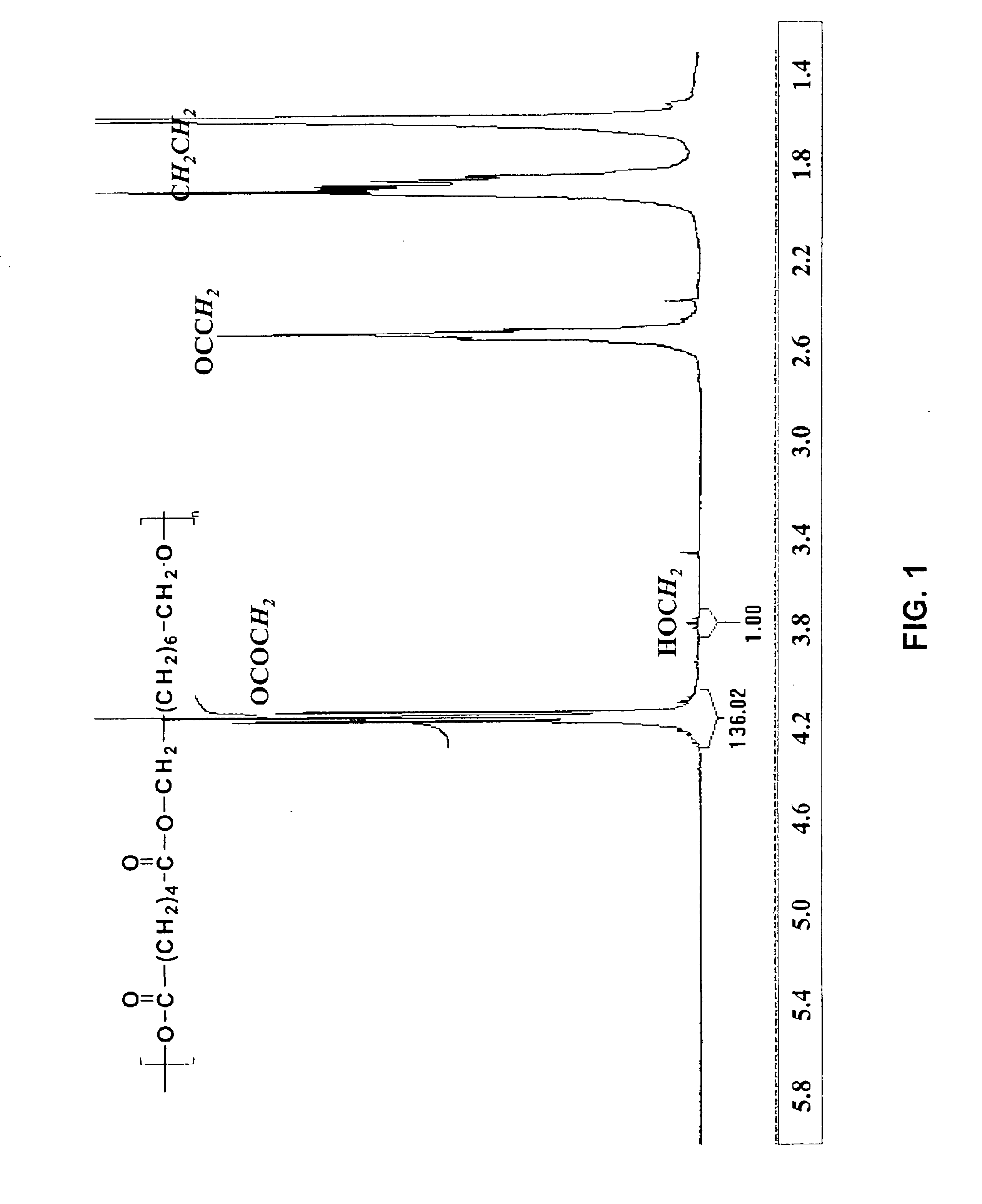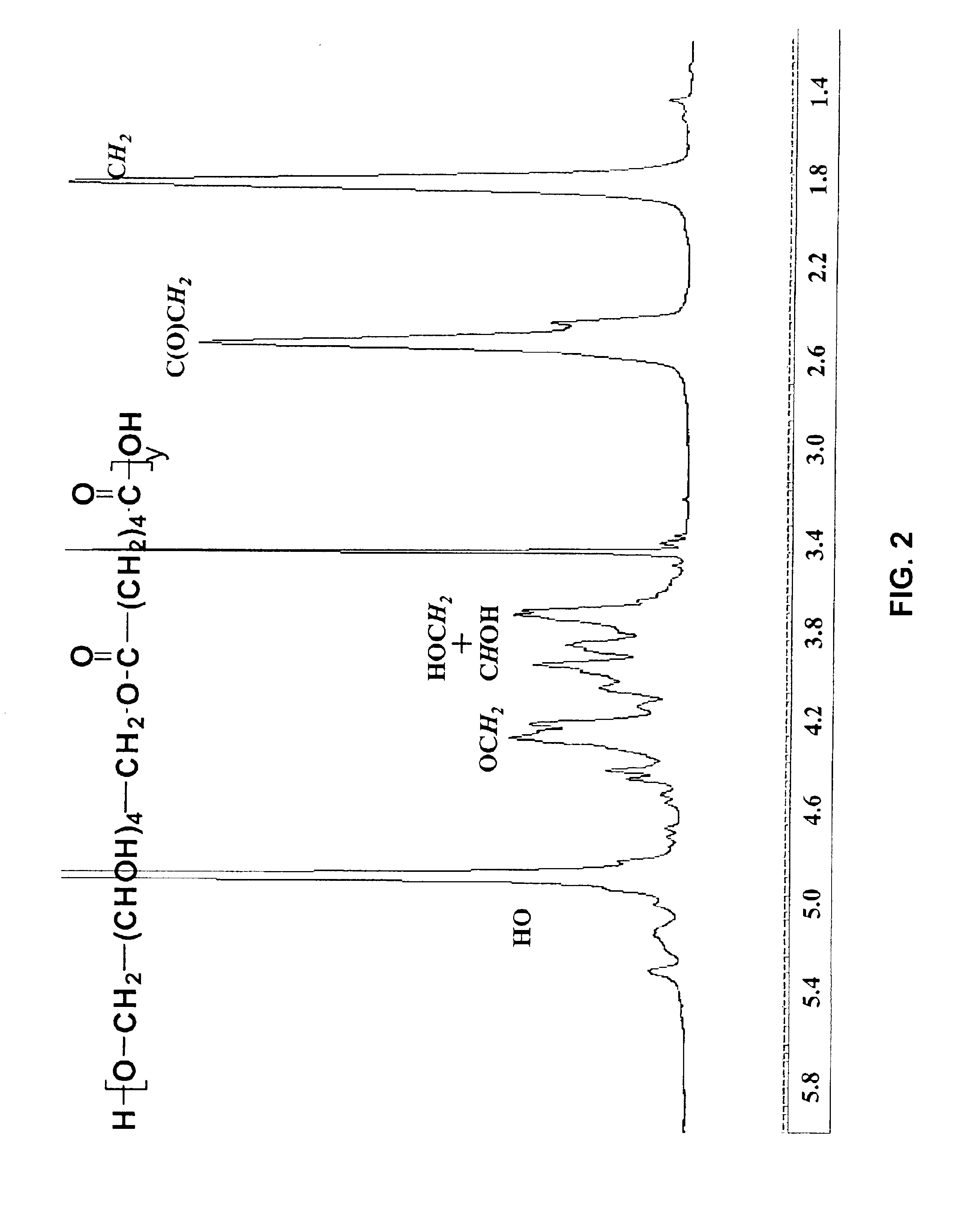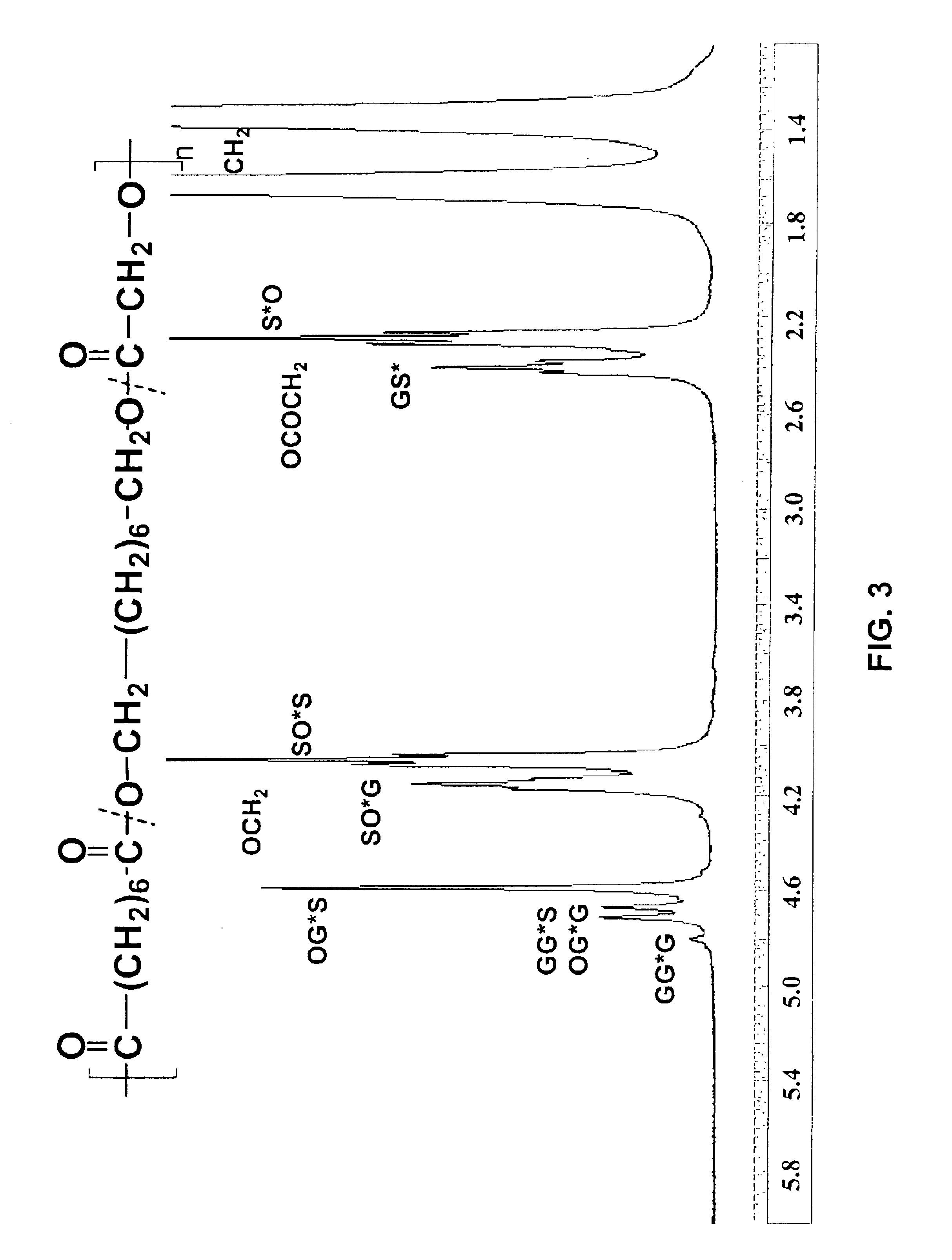Enzyme-catalyzed polycondensations
a technology of enzymes and polymerization processes, applied in the field of enzyme-catalyzed polymerization processes, can solve the problems of difficult removal of catalysts from the system, loss of product molecular weight upon storage, and inability to teach methods that allow simultaneous polymerization of lactones, etc., to achieve high-reactive condensation polymerization, reduce the viscosity of polymerization, and high regioselectivity
- Summary
- Abstract
- Description
- Claims
- Application Information
AI Technical Summary
Benefits of technology
Problems solved by technology
Method used
Image
Examples
example 1
Diacid and Diol Condensation
[0111]
[0112]Materials: Adipic Acid, Octaneidol, Novozyme-435.
[0113]Adipic acid (Aldrich 11.4 g, 0.1 mole, 1 eq.) was suspended in the melt of octanediol (Aldrich, 11.4 g, 0.1 mole, 1 eq.) at 75° C. Novozyme-435 (220 mg) was charged to the flask and the reaction was continued for 30 min. The reaction was then subjected to reduced pressure (from 10 mmHg) to remove water from the system. For all other details, see the General Process Methods above. After a 24 hr reaction time, the reaction mixture was fractionated by precipitation into methanol. The resulting product was obtained in >96% yield with an Mn of 22.6 kg / mol and Mw / Mn of 1.7 (analyzed by light scattering). Analysis of aliquots (2-24 hr) from gel permeation chromatography was used to show the correlation between reaction time and molecular weight build-up. Proton NMR (FIG. 1, in CDCl3) of the non-fractionated product after 24 hr was used to analyze the polymer end-group structure. The signals were ...
example 2
Diacid and Polyol Condensation
[0115]
[0116]Materials: Adipic Acid, Sorbitol
[0117]Adipic acid (Aldrich 2.0 g, 0.1 mole, 1 eq.) was suspended in the melt of sorbitol (Aldrich, 2.492 g, 0.1 mole, 1 eq.) at 105° C. The temperature of the reaction mixture was brought to 90-95° C. and then Novozyme-435 (500 mg) was charged to the reaction flask. The reaction was maintained at between 90-95° C. for 48 hr. The reaction was subjected to reduced pressure (from 30-50 mmHg) initially at 50 mmHg and with time it was raised to 20 mmHg to remove water from the system. For all other details see the General Process Methods above. The reaction product obtained after 48 hr, was fractionated in acetone. The acetone insoluble material was >90% of the product and had an Mn of 22.6 kg / mol and Mw / Mn of 1.7 (by light scattering). NMR analysis showed that the product was >90% regioselective at 1,6 position of sorbitol (FIG. 2).
example 3
Simultaneous Condensation and Ring-Opening Polymerization of a Mixture Consisting of a Diacid, Diol, and Lactone
[0118]
[0119]Materials: Sebacic acid, Octanediol, Glycolide, Novozyme-435.
[0120]Sebacic acid (Aldrich, 3.23 g, 1 eq.) was suspended in the melt of octanediol (Aldrich, 2.34 g, 1 eq.) and glycolide (928 mg, 0.5 eq) at 90° C. Novozyme-435 (325 mg) was charged to the flask and the reaction was continued for 2 hr. The reaction was then subjected to reduced pressure (from 30-50 mmHg) initially at 50 mmHg and with time it was raised to 30 mmHg to remove water from the system. For all other details see the General Process Methods above. The reaction product obtained after 48 hr was fractionated in methanol. The methanol insoluble material was >90% of the product and had an Mn of 12.1 kg / mol and Mw / Mn of 1.9 (by GPC).
[0121]By variation in the glycolide added to the monomer feed, the incorporation of glycolide has been varied from 6 to 35 mol %. The molecular weight of these glycoli...
PUM
| Property | Measurement | Unit |
|---|---|---|
| polydispersity | aaaaa | aaaaa |
| polydispersity | aaaaa | aaaaa |
| temperature | aaaaa | aaaaa |
Abstract
Description
Claims
Application Information
 Login to View More
Login to View More - R&D
- Intellectual Property
- Life Sciences
- Materials
- Tech Scout
- Unparalleled Data Quality
- Higher Quality Content
- 60% Fewer Hallucinations
Browse by: Latest US Patents, China's latest patents, Technical Efficacy Thesaurus, Application Domain, Technology Topic, Popular Technical Reports.
© 2025 PatSnap. All rights reserved.Legal|Privacy policy|Modern Slavery Act Transparency Statement|Sitemap|About US| Contact US: help@patsnap.com



